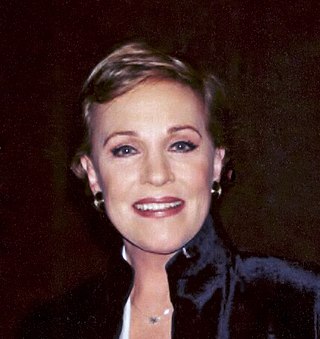Grammy Award for Best Spoken Word Album for Children
Award for the best spoken children album From Wikipedia, the free encyclopedia
The Grammy Award for Best Spoken Word Album for Children was an honor presented at the Grammy Awards, a ceremony that was established in 1958 and originally called the Gramophone Awards,[1] to recording artists for works containing quality "spoken word" performances aimed at children. Honors in several categories are presented at the ceremony annually by the National Academy of Recording Arts and Sciences of the United States to "honor artistic achievement, technical proficiency and overall excellence in the recording industry, without regard to album sales or chart position."[2]
| Grammy Award for Best Spoken Word Album for Children | |
|---|---|
| Awarded for | Quality spoken word performances aimed at children |
| Country | United States |
| Presented by | National Academy of Recording Arts and Sciences |
| First award | 1994 |
| Final award | 2011 |
| Website | grammy.com |
The award was first presented to Audrey Hepburn and producers Deborah Raffin and Michael Viner in 1994 for the album Audrey Hepburn's Enchanted Tales. Its last winners were the artists, producers, audio engineers, and audio mixers who contributed to the album Julie Andrews' Collection of Poems, Songs, and Lullabies in 2011, when it was announced the award would be combined with the Grammy Award for Best Musical Album for Children to form the Grammy Award for Best Children's Album.[3]
Tom Chapin holds the record for the most wins in this category, with a total of three. Artists Bill Harley and Jim Dale, along with audio engineer David Correia, and producers Arnold Cardillo and David Rapkin, and audio engineer-musical director Rory Young, are the others to win the award more than once, all winning it twice. Former U.S. President Bill Clinton has also won the award, along with Mikhail Gorbachev and Sophia Loren, for their work on the album Wolf Tracks and Peter and the Wolf at the 2003 installment of the awards.
Recipients
Summarize
Perspective




| Year[I] | Performing artist(s) | Personnel | Work | Nominees | Ref. |
|---|---|---|---|---|---|
| 1994 | Audrey Hepburn | Deborah Raffin and Michael Viner, producers | Audrey Hepburn's Enchanted Tales |
|
[4] |
| 1995 | Various artists | Robert Guillaume, narrator. Randy Thornton and Ted Kryczko, producers | The Lion King Read-Along |
|
[5] |
| 1996 | Patrick Stewart | Dan Broatman and Martin Sauer, producers | Prokofiev: Peter and the Wolf |
|
[6] |
| 1997 | David Holt | Steven Heller, David Holt, and Virginia Callaway, producers | Stellaluna |
|
[7] |
| 1998 | Charles Kuralt | John McElroy, producer | Winnie-the-Pooh (A. A. Milne) |
|
[8] |
| 1999 | Various artists (Jim Belushi, Robert Davi, Tate Donovan, Linda Hamilton, Patrick MacNee, Bill Pullman, Daphne Zuniga[9]) | Dan Musselman and Stefan Rudnicki, producers | The Children's Shakespeare |
|
[10] |
| 2000 | Graham Greene, Wynton Marsalis, and Kate Winslet | David Frost and Steven Epstein, producers | Listen to the Storyteller |
|
[11] |
| 2001 | Jim Dale | David Rapkin, producer | Harry Potter and the Goblet of Fire |
|
[12] |
| 2002 | Tom Chapin | Arnold Cardillo, producer. Rory Young, audio engineer | Mama Don't Allow |
|
[13] |
| 2003 | Tom Chapin | – | There Was an Old Lady Who Swallowed a Fly |
|
[14] |
| 2004 | Bill Clinton, Mikhail Gorbachev, and Sophia Loren | Wilhelm Hellweg, producer. Jean-Marie Geijsen, audio engineer. | Prokofiev: Peter and the Wolf/Beintus: Wolf Tracks |
|
[15] |
| 2005 | Tom Chapin | Arnold Cardillo, producer. Rory Young, audio engineer. | The Train They Call the City of New Orleans |
|
[16] |
| 2006 | Various artists | Christopher B. Cerf and Marlo Thomas, producers. Nick Cipriano, audio engineer. | Marlo Thomas & Friends: Thanks & Giving All Year Long |
|
[17] |
| 2007 | Bill Harley | David Correia, audio engineer | Blah Blah Blah: Stories About Clams, Swamp Monsters, Pirates and Dogs |
|
[18] |
| 2008 | Jim Dale | Orli Moscowitz and David Rapkin, producers. Nikki Banks, Sound Engineer. | Harry Potter and the Deathly Hallows |
|
[19] |
| 2009 | Bill Harley | Daniel P. Dauterive, producer. Beth Anne Austein, David Correia, and Michael Marsolek, audio engineers. | Yes to Running! Bill Harley Live |
|
[20] |
| 2010 | Buck Howdy | Buck Howdy, producer. Steve Wetherbee, audio engineer and mixer. | Aaaaah! Spooky, Scary Stories & Songs |
|
[21] |
| 2011 | Julie Andrews and Emma Walton Hamilton | Michele McGonigle, producer. Cynthia Daniels, John Colucci and Tommy Harron, audio engineers and mixers. | Julie Andrews' Collection of Poems, Songs, and Lullabies |
|
[22] |
^[I] Each year is linked to the article about the Grammy Awards held that year.
See also
References
External links
Wikiwand - on
Seamless Wikipedia browsing. On steroids.